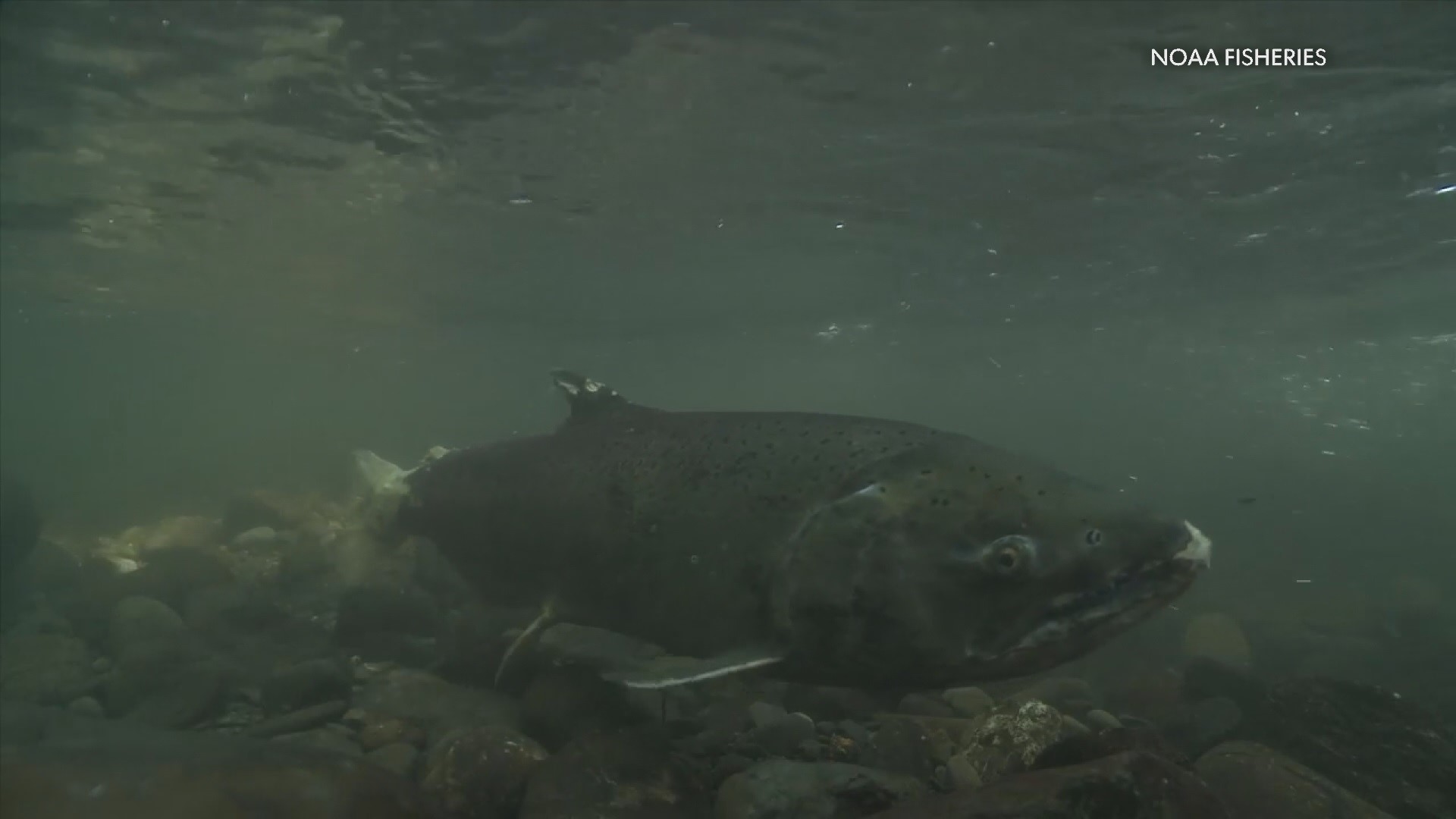TACOMA, Wash. — Northwest Salmon Research kicked off its annual project to help grow the Chinook salmon population in Puget Sound.
Students from Tacoma’s Science and Math Institute (SAMi) will raise juvenile Chinook salmon fry in a temporary saltwater net pen, feed them on a high-saline diet, then release the fry into the Sound after six weeks.
The experience is part of the Chinook, Orca, Research and Education (C.O.R.E.) Project, a community-led collaboration between the Puyallup Tribe, Tacoma Public Schools, and other city departments who say preserving the Chinook salmon population is a high priority for Tacoma and the Puget Sound region.
Each fish will be individually tagged to gather future data. On June 14, they’ll finally be released into the wild.
Eamon Keating and his robotics team will play a vital role in making sure the Chinook salmon’s habitat is safe.
“You can’t see the net down there,” explained Keating. “So, our job is to take a robot down and inspect the net without ever having to put a person down there, and if we can, if we do find a problem, we try and fix it with the net.”
Keating said the experience would give him more than just some good memories.
“I’ve learned all these cool engineering skills,” said Keating. “I’ve learned more about salmon than I ever thought I would know.”
Liz Minks, co-director of SAMi, said the hope is by including young people, a sense of responsibility can be instilled early to preserve Puget Sound’s ecosystem.
"Students need to have experiences where they can learn the impact of their work, instead of just theoretical experiences,” said Minks. “We can have students participating in the community as much as possible, with real authentic projects.”
C.O.R.E. also aims to improve the entire ecosystem by replenishing the Chinook salmon population.
“We don’t have enough orcas, and the Chinook are their food,” explained Minks. “So… we are trying to help them survive by providing them their food.”
According to the Environmental Protection Agency, only 22 of at least 37 historic Chinook salmon populations remain, and their numbers have fallen as low as 10% of their usual population size.
Northwest Salmon Research President Wayne Harmond remembers when Chinook salmon wasn't even available.
"There was a time when you couldn't get Chinook salmon. You just couldn't,” recalled Harmond. “Now we’re at a point where there’s more fish, there’s a quota now that we can take a healthy number of fish, and put it out at these great restaurants and have this great healthy food, and we want to see that grow.”
This is why Harmond says it is important to teach young people ways to preserve the ecosystem.
But after working with the students, he's confident Puget Sound will be in good hands.
“They’re the ones telling us how cool this is,” said Harmond. “They understand, so they’re inspiring us at the same time we’re inspiring them.”

